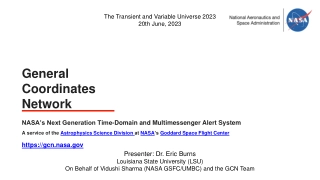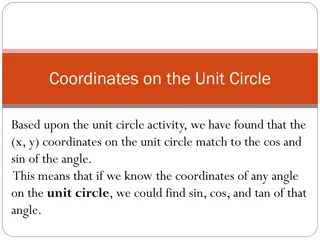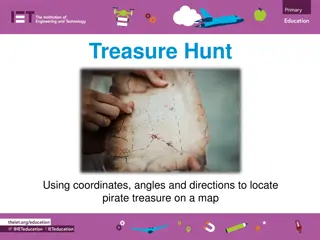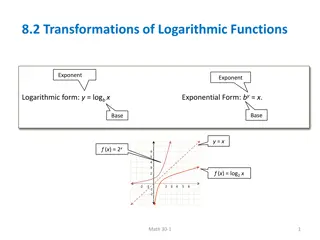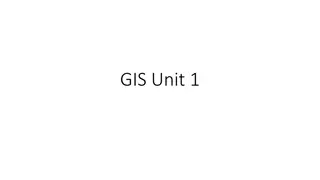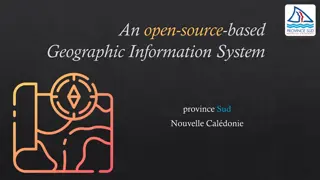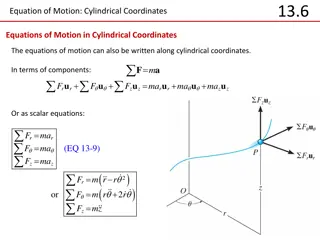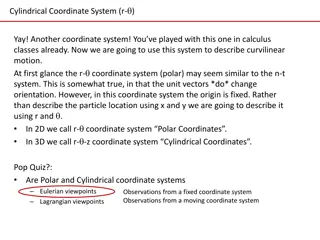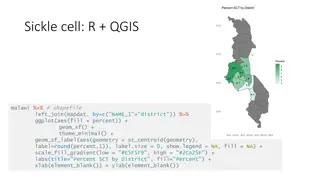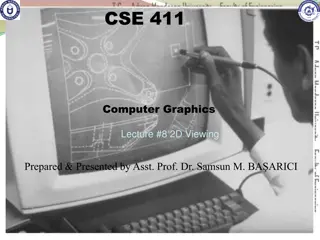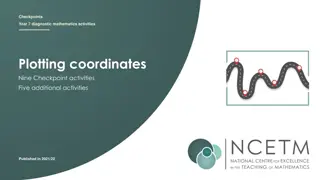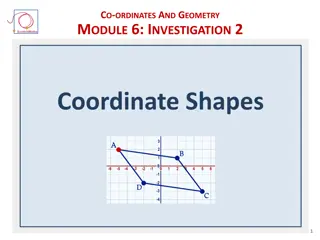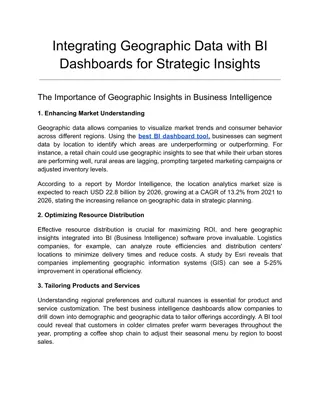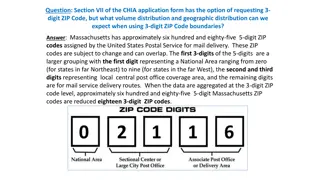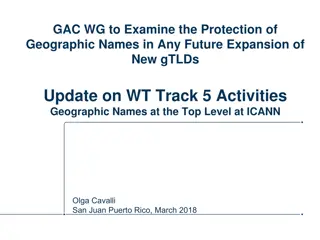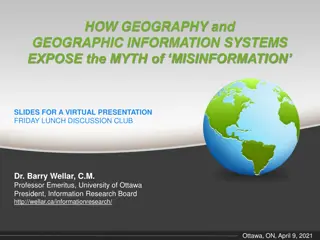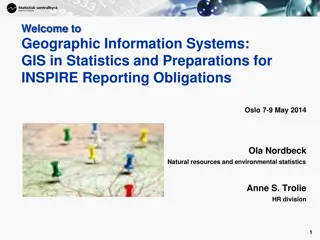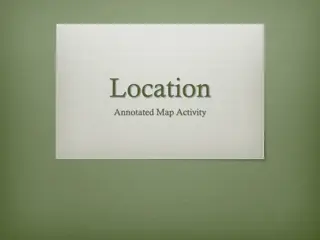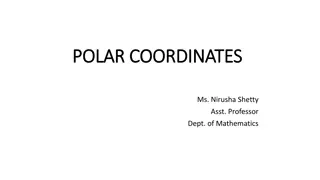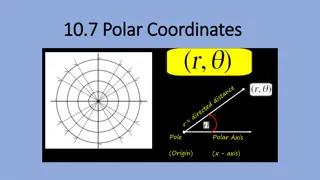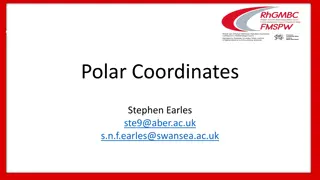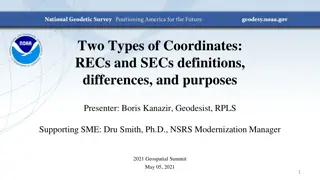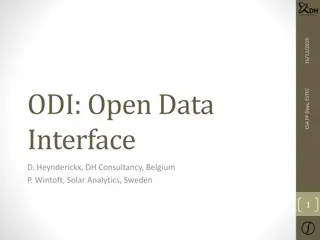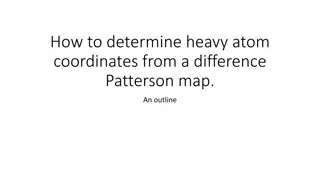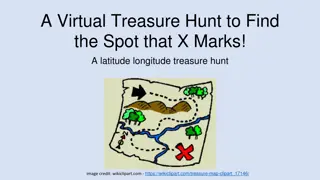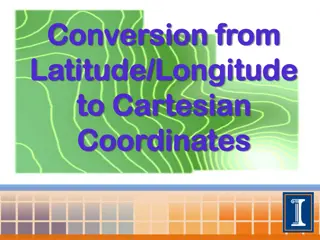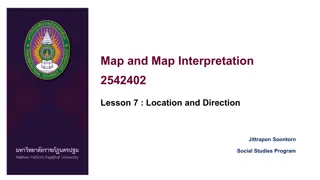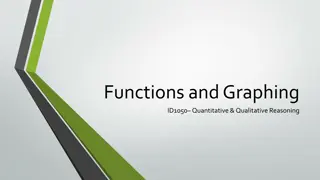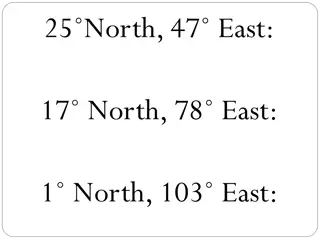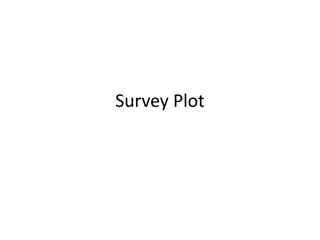General Coordinates Network
Delve into the realm of transient astrophysical events with NASA's General Coordinates Network (GCN). Dr. Eric Burns from LSU, along with the GCN team, facilitates real-time alerts and groundbreaking discoveries in astrophysics. Witness the evolution of GCN to serve new transients, messengers, and o
1 views • 26 slides
Coordinates on the Unit Circle
Exploring how the coordinates on the unit circle correspond to trigonometric functions like sine, cosine, and tangent. Learn how to find these values for angles on the unit circle and how to apply trigonometry principles when points are not on the unit circle.
9 views • 6 slides
Interactive Pirate Treasure Hunt with Coordinates and Directions
Explore the exciting world of pirate treasure hunting using coordinates, angles, and directions on a map. Learn how to locate hidden treasures by following clues and instructions. Try your hand at finding the treasure using different methods such as reading coordinates, moving in vectors, and naviga
0 views • 5 slides
Logarithmic Function Transformations
Explore transformations of logarithmic functions through examples involving vertical and horizontal stretches, translations, and reflections. Understand how to sketch the graphs of logarithmic functions and determine missing coordinates on the graphs. Additionally, learn about transformations such a
3 views • 9 slides
Evolution of Data Processing Systems in Geographic Information Science
Data processing systems in Geographic Information Science have evolved from manual, analogue methods to advanced software and hardware components. The incorporation of Geographic Information Systems (GIS) has revolutionized the handling and analysis of geo-referenced data, making tasks like data cap
3 views • 20 slides
Geographic Objects in GIS
Geographic objects play a crucial role in GIS by being easily distinguished and named based on parameters like location, shape, size, and orientation. These objects are studied collectively to understand their interactions and relationships, aiding in tasks such as navigation systems and route optim
5 views • 13 slides
Geographic Information System in Sud Nouvelle Calédonie
The province of Sud Nouvelle Calédonie utilizes an open-source-based Geographic Information System (GIS) to serve its territorial administration, with a focus on applications such as land administration, environment, agriculture, and urban planning. The system is supported by a team of engineers, g
0 views • 15 slides
Equations of Motion in Cylindrical Coordinates
Equations of motion in cylindrical coordinates can be expressed in terms of components or scalar equations. Practical applications include analyzing motion in various engineering systems. In-class practice problems involve dealing with spring forces and applying the chain rule to determine forces in
1 views • 9 slides
Curvilinear Motion with Cylindrical Coordinates in Physics
Cylindrical coordinates, specifically the r- coordinate system, are useful in describing curvilinear motion. This system helps explain motion in relation to a fixed origin, making it ideal for scenarios involving rotation or changes in angle. By using radial and transverse unit vectors, positions, v
1 views • 16 slides
what is Geographic Tongue and how does it look
Geographical tongue is an non-contagious condition that provides an atypical, map-like structure to the tongue. A detailed note on this problem is given here. For More Info Visit: \/\/ \/what-is-geographic-tongue\/
0 views • 11 slides
what is Geographic Tongue and how does it look
Geographical tongue is an non-contagious condition that provides an atypical, map-like structure to the tongue. A detailed note on this problem is given here. For More Info Visit: \/\/ \/what-is-geographic-tongue\/
0 views • 11 slides
Geographic Data Visualization in R and QGIS for Malawi Health Analysis
Utilizing R and QGIS, this project focuses on visualizing sickle cell and HIV percentages by district in Malawi, mapping health facility locations, creating Voronoi polygons, and displaying malaria cumulative incidence data. Various geographic data visualization techniques are applied to provide ins
0 views • 8 slides
2D Viewing in Computer Graphics
Exploring the concept of 2D viewing in computer graphics, this lecture covers the 2D viewing pipeline, including clipping, window normalization, viewport transformations, and OpenGL 2D viewing functions. It explains how a picture is defined using a Cartesian coordinate system, selecting views within
3 views • 84 slides
Interactive Mathematics Activities for Year 7: Plotting Coordinates and More
Engage in a series of nine checkpoint activities focusing on plotting coordinates, including scenarios like ant movements, pirate treasure hunts, high and low points, and understanding coordinate axes. Dive into fun challenges and develop key skills in mathematics while exploring various coordinate
0 views • 29 slides
Hyper-Spherical Harmonics and Multi-Particle Quantum Systems
Explore the application of hyper-spherical harmonics in solving multi-particle quantum systems, focusing on permutation symmetry and splitting wave functions into radial and angular components. The approach involves using center-of-mass reference systems, Jacobi coordinates for different masses, and
0 views • 21 slides
Coordinate Shapes Investigation: Module 6 Activity 6.2.1
Explore coordinate geometry and shapes in Module 6 Investigation 2 Activity 6.2.1. Learn how to build scripts for sprites, spell words using coordinates, and complete coordinate challenges with letters. Get hands-on experience with letters, coordinates, and grid points within a fun and interactive l
0 views • 27 slides
Integrating Geographic Data with BI Dashboards for Strategic Insights
Explore the transformative potential of integrating geographic data into BI dashboard tool for strategic insights in our latest blog. Dive deep into the process\u2014from defining precise objectives and meticulous data collection to expert dashboard
0 views • 13 slides
Geographic Distribution Using 3-Digit ZIP Codes
Massachusetts has approximately 685 5-digit ZIP codes assigned by the USPS, which can be aggregated into 18 3-digit ZIP codes for geographic analysis. The distribution of Emergency Department visit volumes varies across these 3-digit ZIP code boundaries, reflecting different regional characteristics
1 views • 4 slides
GAC Working Group on Geographic Names Protection in New gTLD Expansion
The GAC Working Group is focused on improving protections for geographic names in future gTLD expansions. They aim to develop practical options and rules to reduce uncertainties for governments, communities, and applicants using geographic or community names. The group seeks to engage local communit
3 views • 27 slides
Exposing the Myth of Misinformation Through Geography and GIS
Geography and Geographic Information Systems play a crucial role in debunking the myths of misinformation. Dr. Barry Wellar discusses the impact of misinformation, highlighting the importance of geographic data in transforming information and knowledge. The presentation delves into the reasons behin
0 views • 17 slides
Geographic Information Systems: GIS in Statistics and INSPIRE Reporting Obligations
This document outlines the agenda and practical details for a GIS workshop focusing on statistical production and data processing related to geographic information systems. It includes sessions on population gridded data production, automation processes, and practical exercises. Participants from va
2 views • 5 slides
Earth's Geography: Location, Coordinates, and Hemispheres
Explore the concepts of absolute and relative locations, lines of latitude and longitude, GPS coordinates, and hemispheres in geography. Learn how to create a compass rose and label continents and oceans on a map. Understand how to describe locations using landmarks, direction, time, and distance.
0 views • 10 slides
Polar Coordinates in Mathematics
Polar coordinates define the location of a point in terms of distance and angle from an origin. The distance is denoted by "r" and the angle by "?". However, the angle is not unique for a point. The concept involves fixing an origin and an initial ray, with positive angles measured counterclockwise.
0 views • 7 slides
Polar Coordinates in Mathematics
Polar coordinates provide an alternative way to plot points using a directed angle and distance from the origin. This system involves radius (distance) and angle measurements, allowing for multiple representations of points. Graphing polar coordinates, converting between polar and rectangular coordi
0 views • 19 slides
Introduction to Polar Coordinates: A Different Coordinate System
Exploring the concept of polar coordinates, a coordinate system introduced in the mid-seventeenth century by notable mathematicians independently. Learn about measuring angles in radians, converting between degrees and radians, and drawing graphs in polar coordinates by considering length and angle
0 views • 34 slides
Applications of Hyper-Spherical Harmonics in Physics
Explore the utility of hyper-spherical harmonics as a natural basis for solving three-particle wave functions in physics, specifically in areas such as atomic physics, molecular physics, and systems involving three quarks. Learn about their role in reducing the complexity of problems, providing mani
0 views • 28 slides
REC and SEC Coordinates in Geodesy
Geodesist Boris Kanazir and NSRS Modernization Manager Dru Smith delve into the definitions, differences, and purposes of Reference Epoch Coordinates (RECs) and Survey Epoch Coordinates (SECs) at the 2021 Geospatial Summit. OPUS coordinates, SEC computation by NGS every four weeks, REC re-computatio
0 views • 17 slides
Open Data Interface (ODI) Project Overview and Components
Open Data Interface (ODI) is a database system developed in 2008 for ingesting, processing, storing, and retrieving space environment data. The project involves a server, client, and various components for data manipulation and integration. Current contractors include DH Consultancy and Solar Analyt
0 views • 15 slides
Deciphering Heavy Atom Coordinates from Difference Patterson Map: An Overview
Understanding how to determine heavy atom coordinates from a difference Patterson map involves recognizing the relationship between Patterson peak coordinates (u,v,w) and space group symmetry operators in crystallography. By solving equations that relate these coordinates, the absolute positions of
0 views • 5 slides
Overview of the U.S. Federal Statistical System and Census Geography
The U.S. Federal Statistical System comprises 13 principal statistical agencies responsible for collecting and analyzing data across various sectors. The system includes agencies like the Bureau of Economic Analysis, Bureau of Labor Statistics, and U.S. Census Bureau. Geographic identifiers (GEOIDs
0 views • 94 slides
Discover the Exciting World of Latitude and Longitude
Dive into a virtual treasure hunt where you'll explore the concepts of latitude and longitude. Learn about the lines of latitude and longitude, hemispheres, coordinate choices, and how they help us pinpoint specific locations on a map. Test your skills with engaging activities and practice identifyi
0 views • 17 slides
Geodetic Datums and WGS-84 Coordinates
Geodetic datums define the earth's shape and size, serving as reference points on coordinate systems. Vertical datums establish zero surface elevation, while horizontal datums form the basis for horizontal coordinates. The World Geodetic System 1984 (WGS-84) is the reference system used by GPS and l
0 views • 29 slides
Location and Direction on Maps
Location and Direction are essential aspects of reading maps. Traditional methods use relative location descriptions, while modern approaches incorporate absolute coordinates. Maps utilize coordinate systems like Geographic Coordinate System (GCS) and Universal Transverse Mercator System (UTM) to pi
0 views • 30 slides
Geographic Coordinates: Importance and Significance
Explore the significance of geographic coordinates in oceanography and ecosystems. Learn why wind plays a crucial role in various oceanographic disciplines. Discover how latitude and longitude are utilized to pinpoint locations on Earth's surface, whether using degrees, minutes, seconds or decimal d
0 views • 31 slides
Functions and Graphing in Mathematics
Functions and graphing play a crucial role in quantitative and qualitative reasoning. We explore the concept of points on a graph, coordinates, relations, functions, and ways to express functions. Utilizing visual aids and analogies, we delve into the importance of coordinates, the distinction betwe
0 views • 10 slides
Shoe Lace Method for Finding Polygon Areas
The Shoe Lace Method is a mathematical process used to determine the area of any polygon by employing coordinate geometry. By following specific steps, including organizing coordinates, multiplying diagonally, and adding columns in a certain manner, the method allows for a straightforward calculatio
0 views • 8 slides
Graphics Output Primitives and Coordinate Reference Frames
Graphics output primitives and coordinate reference frames play a crucial role in describing scenes and drawing basic geometric structures in 2D space. These concepts involve defining points, drawing lines, and understanding pixel coordinates within a coordinate system. Absolute and relative coordin
3 views • 35 slides
Weak Superconductivity and Functional Coordinates
Delve into the realm of weak superconductivity and the significance of functional coordinates in this informative presentation. Explore the intricacies of these concepts through a series of visually appealing slides that shed light on their characteristics and applications. Gain insights into the re
0 views • 8 slides
Cities Around the World Through Coordinates
This content showcases different cities worldwide with their respective coordinates, providing a geographical insight into diverse locations. From Riyadh, Saudi Arabia to Singapore, and Chengdu, China to Novosibirsk, Russia, embark on a virtual journey across continents. Discover the positions of Ul
0 views • 8 slides
Calculating Polygon Area and Trapezium Area with Known Coordinates
The content above guides you on finding the exact area of a polygon by calculating the areas of individual triangles within it. It also demonstrates how to list coordinates in a spreadsheet, calculate the area of trapeziums formed by pairs of coordinates, and sum their areas to determine the total a
0 views • 28 slides
